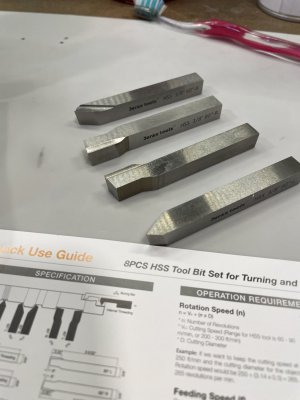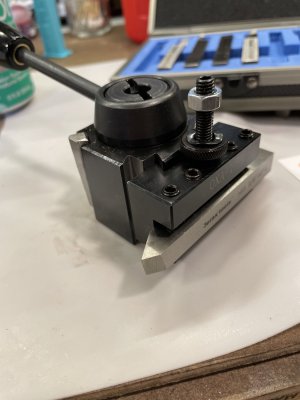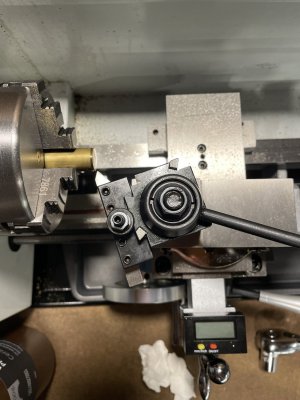Now your getting closer! The orientation looks good in this photo. As @Firstram pointed out, you will need to disassemble and reassemble moving the handle. When the handle is tightened, it should be around the 4-5 o'clock position, around 2 o'clock in the loose position.Ok, thanks again you guys. I really appreciate all of the great feedback. Based on comments I’ve got things moved around so I’m looking for a little more feedback. Please ignore the carbide insert, it's just there for a placement photo. My quick change tool post may need to be adjusted because if I put the loading bars at 9 and 12 o'clock the tightening down handle almost collides with the height adjustment when clamping it down. Here’s where it sits now.
Make sure to set your elevation on your HSS tool top at the midpoint of your material. We are going to get there!




